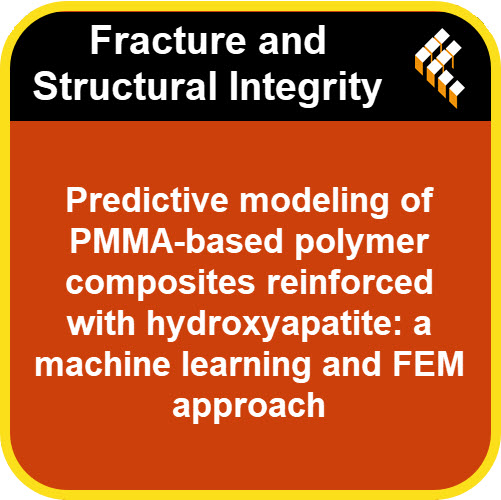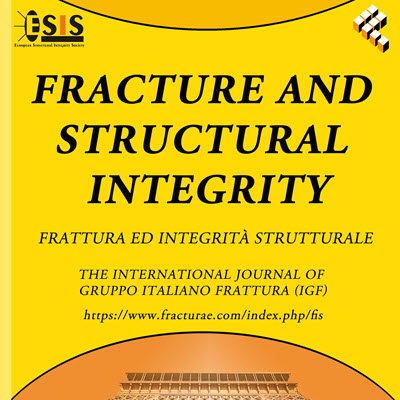Fracture and Structural Integrity: The Podcast
Stay at the cutting edge of fracture mechanics and structural integrity research with the official podcast of the Fracture and Structural Integrity journal. Join us for insightful interviews with top researchers, in-depth discussions of groundbreaking papers, and explorations of emerging trends in the field.
RSS Spotify YouTube Amazon Music
Predictive modeling of PMMA-based polymer composites reinforced with hydroxyapatite: a machine learning and FEM approach
2025-05-07
https://www.fracturae.com/index.php/fis/article/view/5433
This research examines the mechanical characteristics of polymer composites (PMMA) that are reinforced with Hydroxyapatite (HAp), with a particular emphasis on the Elastic Modulus and Compressive Strength. The investigation employs a multifaceted approach that integrates experimental methods, micromechanical analysis, and machine learning techniques. Experimental assessments of Elastic Modulus and Compressive Strength were conducted at various HAp concentrations (5%, 15%, and 30%) and were compared with theoretical predictions derived from Representative Volume Element (RVE) and micromechanical frameworks, including Voigt and Reuss bounds. Various machine learning algorithms, such as Feedforward Neural Network (FFNN), Radial Basis Neural Network (RBNN), and Support Vector Machine (SVM), were used to predict the mechanical properties. The RBNN exhibited high accuracy (R² = 0.92; MAE = 0.05) for intermediate HAp levels (20-30%) but displayed instability at the extremes % of reinforcements values . The FFNN consistently provided lower estimates of the properties, whereas the SVM yielded robust and stable predictions that closely matched both experimental and theoretical results with the error of (2-5) % (Result value). This research highlights the effectiveness of integrating micromechanical modeling with machine learning to improve the prediction and comprehension of composite behavior, thereby offering valuable insights for the design and application of advanced materials.
DownloadFiletype: MP3 - Size: 16 MB - Duration: 13:33m (160 kbps 24000 Hz)
Powered by Podcast Generator, an open source podcast publishing solution | Theme based on Bootstrap
